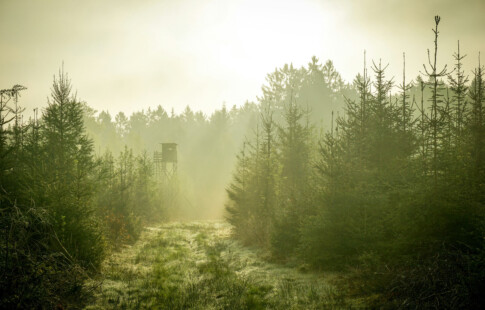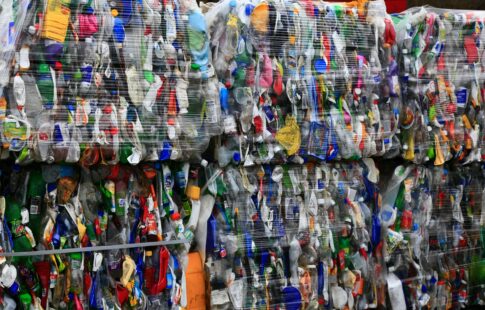
Forest Schools Are More Than Classes Outside
We are reader-supported. When you buy through links on our site, we may earn affiliate commission.
There are countless teaching trends, from Montessori to charter. Every flavor of school is unique and offers students specialized experiences in varied areas of learning. Forest schools are one place that leverages nature’s power on a child’s intellectual development. Whether you have a child entering kindergarten or are long out of formal education, learning about forest schools will help everyone perceive the power they gain from being in natural environments.
What Are Forest Schools?
According to the Forest School Association, forest schools embrace inspiration. They are also called:
- Outdoor nurseries
- Nature kindergarten or preschool
- Forest or outdoor education
- Nature schools
Providing students with outdoor learning opportunities outside of playground time makes them long to explore and take chances by interacting with the unknown in safe, observed spaces. They gather information motivated by their own curiosity and development.
Additionally, being in nature forces students to embrace their senses. They have tactile learning sessions that strengthen their senses connected with organic processes.
Teachers for forest schools train in specific curricula inspired by some of the first forest schools in Scandinavia — though variants started in Germany, Australia, and the United States. The Nords prioritized being in open air, a concept known as friluftsliv, for optimized education. The forest school trend spread outside of these countries all over the world.
What Constitutes a True Forest School?
It isn’t enough to release students outside to see if they obtain educational insights or growth in their social, intellectual, or emotional skills. The Forest School framework has principles that identify an organization with ideal practices:
- Regular exposure and adaptation to woodlands or natural environments.
- Support development based on natural-personal relationships.
- Holistic development that focuses on independence and creativity.
- Encourage supported risk-taking and unprompted discovery.
- Taught by trained professionals in Forest School benchmarks.
- Fosters community through teaching that’s student-centric.
So, what doesn’t matter about a good forest school? The amount of trees or a variety of biodiversity doesn’t matter. Setting constraints in this way would limit what geographic areas could do with forest schools, and they should be accessible to all climates, populations, and environments so long as it prioritizes the principles above.
Each outdoor learning experience teaches students about forest boundaries and how to interact safely with natural objects, flora, and fauna. Environmental literacy is one of the most significant benefits of this type of school, especially as the climate crisis and anti-environmental disinformation run rampant online. These interactions encourage students to tread lightly but without fear.
What Does a Day in the Life Look Like at Forest School?
Some forest schools operate. Differently, but they generally have a similar day-to-day structure. They have lessons, but it also surrounds activities like climbing trees and learning how to light fires in a way that keeps environments safe. These actions wouldn’t usually be allowed or encouraged in traditional settings.
Here is what a typical day looks like based on a few school structures:
- A morning circle for announcements
- Learning opportunities for math, art, and science
- Storytime revolving around a theme
- Snack time
- Free exploration and play
- Guided hiking or movement-based lesson
- Closing circle and reflections about the day
Lessons and activities include yoga, meditation, shelter building, or arts and crafts from natural materials. Forest schools also benefit from changing and removing some of the most wasteful practices in school, such as excess energy and water use. Spending time outside and using what’s available thoughtfully prevents extra resources from being exploited.
Are Forest Schools Expensive? And Other FAQ
Everyone from new parents to retirees is curious about this novel educational system, so let’s figure out the basics with the most popular questions and answers.
So, How Much Do Forest Schools Cost?
Forest schools don’t have a forced structure apart from their principles, so prices vary from school to school in different parts of the world. Complete programs usually cost monthly charges, just like private education.
It might cost anywhere between $1,000 to $2,500 a month, depending on the school’s reputation and the accessibility and opportunities in its lesson plans. You could send a child to school one day per week or replace education entirely with one of these programs — there is flexibility, and prices will reflect that.
What Age Is Best for Forest Schools?
Forest schools are usually for younger children because most programs revolve around kindergarten and early education age groups. Therefore, the best time to enroll students is before age 12.
Are There Forest Schools Near Me?
The Natural Start Alliance nonprofit has a helpful map of the world where forest schools exist. Though they aren’t as widely accessible as other types of schools, the more families participate, the wider spread they will become over time. There are hundreds in the United States, a few across Europe, and even a few in southern Africa.
What Do Children Wear to Forest School?
Just because it rains doesn’t mean forest school is not in session. Depending on the climate, students should prepare accordingly. Everything from flannels to sun hats could be necessary, as parents should be responsible for keeping an eye on the weather, air quality, and bug conditions. Sun protection, bug spray, tick checks, and warm socks can all be a part of the dress code at any point during the school year.
What Resources Do You Need for Forest School?
Depending on what the school is teaching, students may need to acquire unique tools contrary to traditional school supplies, like colored pencils and a calculator. Students may need watering cans or mallets or art or writing journals to catalog their experiences.
Forest Schools as a Powerful Opportunity for Learners
Forest schools are an alternative form of education with just as much validity as others, focusing on environmental interactivity, awareness, and inspiration. Learners can explore and achieve independence that they couldn’t in traditional classrooms. In a world dismissive of the environment’s condition, it’s more important than ever to consider educational settings like this to encourage students to appreciate and reflect on how they use and explore the world.
Share on
Like what you read? Join other Environment.co readers!
Get the latest updates on our planet by subscribing to the Environment.co newsletter!
About the author
Rachel Lark
Rachel serves as the Assistant Editor of Environment.co. A true foodie and activist at heart, she loves covering topics ranging from veganism to off grid living.





